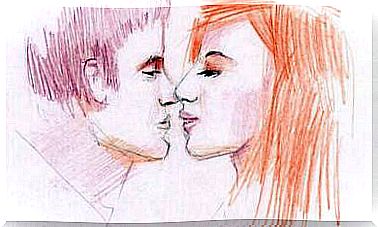Depressive Realism

Depression is one of the most common psychological disorders in our society. Probably, almost all of you who are reading this article have some notion or perhaps you know in the first person or through someone close to you what depression is. Thus, it may sound strange to us that, next to the word depressive, the word realistic may appear, since it is negativity that invades people with depression. So what does depressive realism mean?
Depressive realism was proposed in 1979 by Alloy and Abramson. This concept comes to say that people who suffer from depression are not affected by positive and optimistic expectations that do alter the perception of reality in people who do not suffer from depression.
We will go deeper and show the experiment of these authors in which depressive realism is reflected.

Where does depressive realism come from?
Cognitive theories of depression postulate the existence of a negative self-referential cognitive bias that results in a systematic distortion of reality. As a consequence, depressive symptoms appear.
Although considerable evidence supports this view, some research has shown that depression can also lead to more realistic cognitions.
It is argued that the strongest evidence for depressive realism comes from contingency judgment tasks, as these contain an objective measure of reality with which judgments made by depressed people can be compared.
Using this methodology, Alloy and Abramson (1979) found that non-depressed people are more likely than depressed people to think that outcomes depend on their actions when they are not. They concluded that, compared to depressed people, whose perceptions are apparently accurate, non-depressed people optimistically distort reality.
One interpretation of depressive realism is that non-depressed people have a positive bias, allowing them to feel in control of their environment. Evidence derived from the normal population appears to support this conclusion, because random samples also exhibit a tendency to overestimate relationships between non-contingent events, although this is not always the case.
Depressive realism in contingency judgment studies
We are talking about two types of contingency judgments. One refers to the prediction of whether an event depends on the occurrence of a previous event, the other type of judgment would have to do with the estimated control over the situation.
Early experimental work on contingency judgments suggested that we are not good contingency estimators. However, Alloy and Abramson (1979) stated that depression can actually increase accuracy.
Investigation
In one experiment, they exposed the participants to two conditions. In both, there was zero contingency between pressing the button and whether or not a light illuminated. In other words, pressing the button did not influence the light to turn on or off. On the other hand, what made the difference between the two conditions is the frequency with which the light was turned off and on.
In the low and high density conditions, the result occurred 25% and 75% of the time, respectively. If the participants were accurate or “realistic,” both conditions should be judged similarly because, although the absolute number of outcomes differed between conditions, the overall contingency remained constant.
The results showed that the non-depressed people’s control judgments were higher as the number of outcomes increased, while this interaction was not observed in the depressed people’s judgments.
This increase in the judgments of non-depressed people, which occurs in conditions of high density of results, has been interpreted as an optimistic bias. The lack of optimistic bias on the part of the depressed participants seemed to reflect a better estimate of contingency in the absence of it.
The effect has been replicated using different protocols in which the response does not control the outcome (zero contingencies), but the outcome occurs frequently.
So far there is little evidence that this is a general difference in contingency learning, because with positive contingencies in which the participant has control over the outcome, no differences have been found between depressed and non-depressed people.

How do you explain depressive realism?
Some theories explain why the effect depends on zero contingencies. For example, zero contingencies may fit depressed people’s expectations of having no control over events. This produces the apparently most realistic pattern of judgments.
However, it is argued that non-depressed people have higher expectations of control under such conditions and their higher judgments are consistent with this finding.
Also, non-depressed people may be motivated to maintain their self-esteem. This is associated with having control over events and producing higher judgments of control in zero contingencies.
The suggestion is that this motivation is simply not present in depressed people. Either or both motivational factors and expectations could contribute to the effect of so-called depressive realism.









